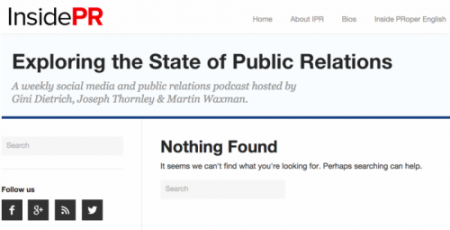Subscribe: Apple Podcasts | Android | RSS
Martin here and I hope you don’t mind if I start with a plug. I’m heading to SXSWV2V in Las Vegas to be a mentor and on a panel called, The Best City in the World May Not Be a City at All. We’ll be talking about what it takes to make the kind of community people flock to live and work in and whether that’s a physical location, online or a creative combination of the two.
Now onto the show with our #IPRMustKnow for this week:
Meerkat introduces Cameo – a new feature that lets you hand off your livestream to other users and offer another angle on a real-time video story.
Twitter keeps getting better at paid promotion and rolls out campaign insights and audience personas to all users.
Facebook changes its settings and allows people to choose which friends and brands they want to see more of in their newsfeed. Have you adjusted yours?
In our main topic, we discuss a recent Pew Study that focuses on how and where we discover and consume news. Turns out 63% of people on both Facebook and Twitter get news from those platforms. Which helps explain why social networks continue to evolve into media companies.
One stat that stood out: just over 60 per cent of millennials get political news from Facebook and 37 per cent from local TV. The numbers are reversed for boomers. What does that mean? Well, don’t think that millennials will switch to TV when they become ‘mature adults’ – because, hey, that’s what adults are supposed to do. It’s yet another wake up call to mainstream media – and PR – on the need to evolve and transform.
And while we’re on the subject of media, do you get a newspaper delivered to your door? If so, how often do you read it? Where do you go first for information and news – social platforms or MSM?
We’d love to hear from you.
Send us an email or an audio comment to [email protected], join the FIR Google+ Community, join the Inside PR Google+ Community, join the Inside PR Facebook group, leave us a comment here, message us @inside_pr on Twitter, or connect with Gini Dietrich, Joseph Thornley, and Martin Waxman on Twitter.
And we have a favor to ask: if you like this podcast, please rate us on iTunes.
******************************************************************
Thank you to the people behind Inside PR.
Our theme music was created by Damon de Szegheo; Roger Dey is our announcer.
Inside PR is produced by Joseph Thornley.

